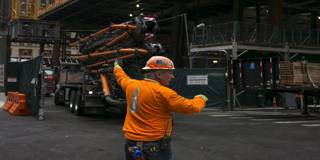Every economy in the world today is divided between an advanced segment, typically globally integrated, employing a minority of the labor force, and a low-productivity segment that absorbs the bulk of the workforce, often at low wages and under poor conditions. How should policymakers address this dualism?
CAMBRIDGE – Around the world today, the central challenge for achieving inclusive economic prosperity is the creation of sufficient numbers of “good jobs.” Without productive and dependable employment for the vast majority of a country’s workforce, economic growth either remains elusive, or its benefits end up concentrated among a tiny minority. The scarcity of good jobs also undermines trust in political elites, adding fuel to the authoritarian, nativist backlash affecting many countries today.

CAMBRIDGE – Around the world today, the central challenge for achieving inclusive economic prosperity is the creation of sufficient numbers of “good jobs.” Without productive and dependable employment for the vast majority of a country’s workforce, economic growth either remains elusive, or its benefits end up concentrated among a tiny minority. The scarcity of good jobs also undermines trust in political elites, adding fuel to the authoritarian, nativist backlash affecting many countries today.